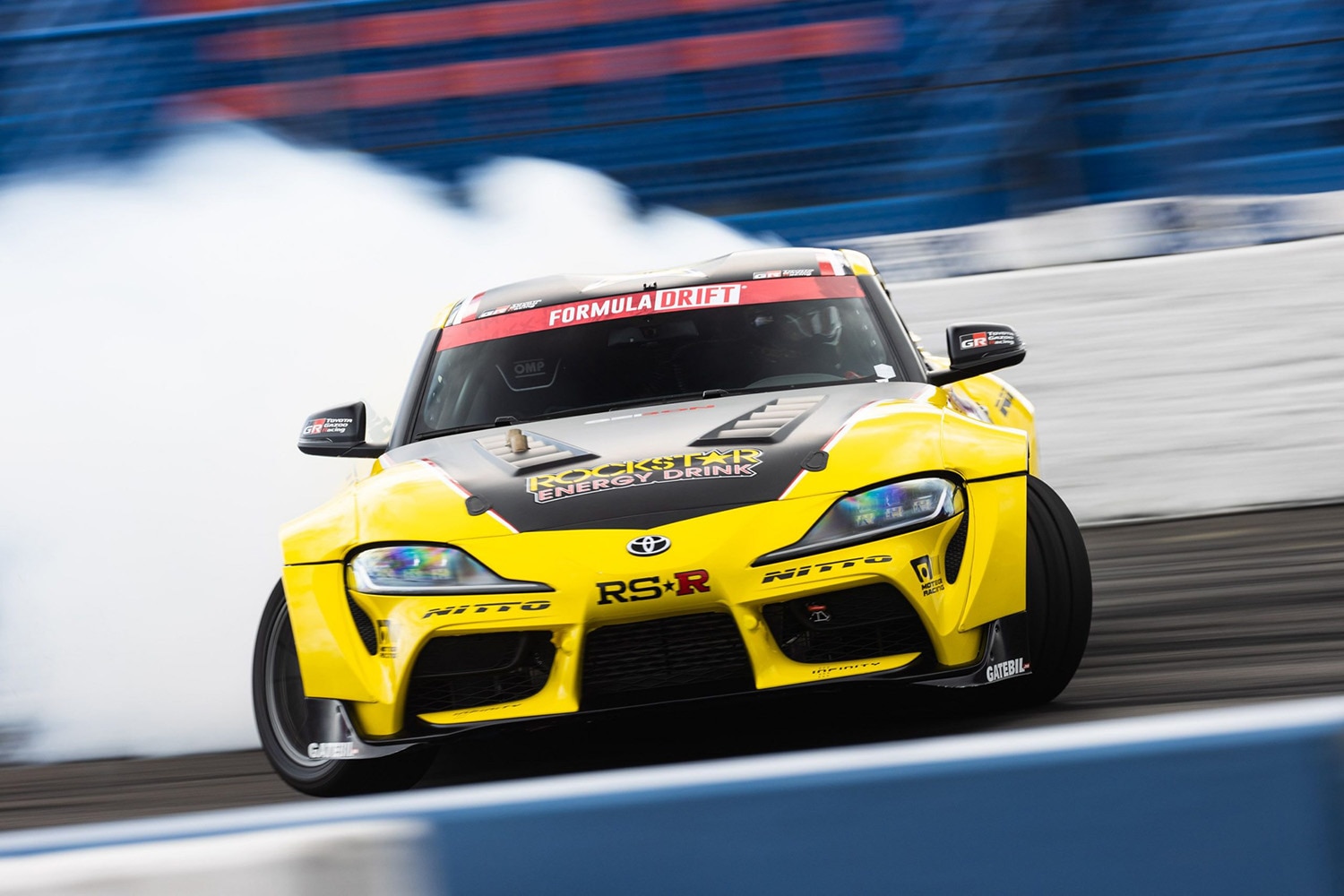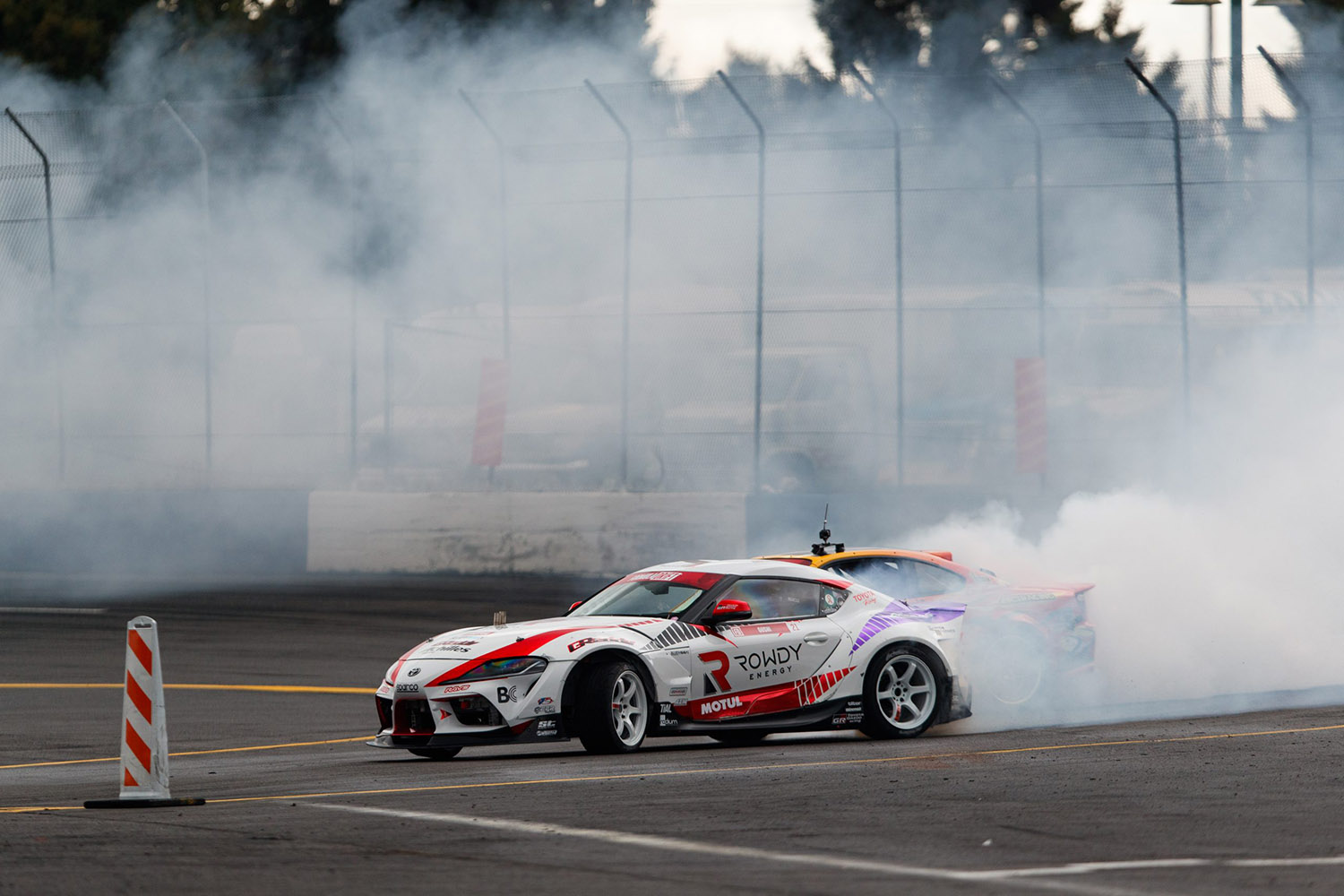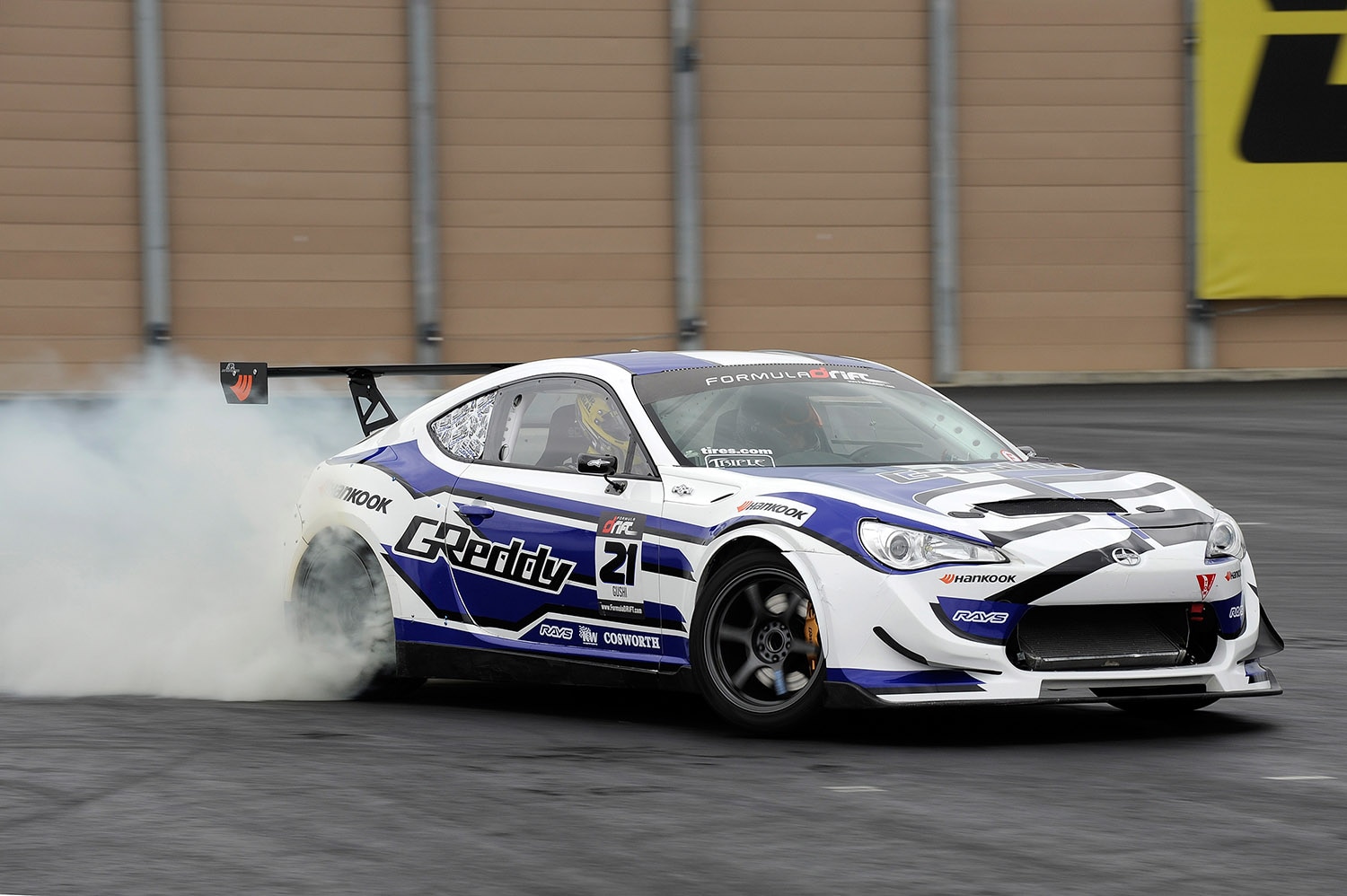Getting to Know the Loud and Smoky World of Drifting
Drifting isn't conventional car racing. But what is it?
 Toyota
Toyota
A relative newcomer in motorsports — at least compared with nearly 130 years of organized automobile racing — the tire-smoking spectacle of drifting might have more in common with Olympic figure skating than NASCAR or Formula 1. Instead of a clock or lap counter determining a winner, a panel of judges scores drifting drivers based on demonstrated skill, style, and error avoidance. And instead of a herd of cars battling for every inch of track advantage and every second of lap time, drifting often involves just two drivers at a time, smoking their tires in stylish tandem, each hoping to outshine (or out-smoke) the other.
 Nissan
Nissan
What Is Drifting?
While drifting may look out of control, it is quite the opposite, and requires a fair amount of precision-driving skill. Achieving speeds that can exceed 90 mph, drivers in drifting competitions deliberately oversteer — meaning they purposely get the back wheels of their vehicle to lose traction with the pavement, the rear end of the car swinging wide. Once drivers have achieved that slide, they maintain the car's sideways posture through a series of corners on a short, paved course, letting the rear wheels drift across the track. The result is a dramatic dance show: cars seeming to glide through billowing white smoke, accompanied by a soundtrack of tire squeal and engine growl.
In drift competitions run by
Speed is just one factor in the competition, and it's judged, not measured (as it would be during a traditional motorsports race). Judges in Formula Drift score drivers on other criteria, too, including the angle of the vehicle, the path driven through corners, and how entertaining the entire drift is to watch. Drivers can lose points for errors like "bobbles" (a sudden loss or increase in vehicle angle) and being "off line" (meaning they've failed to follow a predetermined path, or line, through the course). Drivers can also earn points for what Formula Drift calls X-Factors, which are special techniques drifters use to differentiate themselves from competitors.
 Toyota
Toyota
The Mechanics of Car Drifting
The state of near-constant oversteer that drifting drivers employ — which could, in everyday driving or racing, send a car into a spin or even a crash — is carefully controlled from turn to turn using a skillful combination of throttle, brake, clutch, and steering manipulations.
While any car can theoretically drift, vehicles with rear-wheel drive are often favored by professionals and enthusiasts. Massive horsepower is also an advantage in drifting, so you'll see cars with horsepower figures ranging from 600 to 1,000 in Formula Drift. In terms of specific cars, drifting events can feature modified Chevrolet Corvettes, Toyota Supras, Nissan Skylines, and Mazda RX-7s, among others.
Two car components that greatly aid the drifting slides are a manual transmission and a limited-slip differential. Having a stick-shifted (also known as manually shifted) car allows the driver to break rear-tire traction through a "clutch kick," which involves maintaining pressure on the gas pedal with one foot while simultaneously — and rapidly — depressing then releasing the clutch pedal with the other foot. Clutch-kicking revs up the engine and sends a sudden burst of power to the drive wheels — in a rear-wheel-drive car, those would be the back wheels. Generally speaking, that power surge will result in a loss of drive-wheel traction, which is the first step toward a drift.
A limited-slip differential affects how power is allocated to each drive wheel, helping a car continue to move forward even when one of those wheels loses traction. In the case of drifting, a limited-slip differential can help keep both rear wheels driven — while smoking and sliding — simultaneously.
Drift cars are usually stripped of anti-lock brakes, traction control, and stability control. One thing that can be added to a drift car, though, is special equipment to aid drivers in triggering oversteer. In addition to clutch-kicking, drifters sometimes initiate oversteer using a hand-operated lever connected to the rear brakes. Similar to yanking your car's hand brake while in motion, pulling the drifting-style lever helps the rear wheels temporarily lose traction. If done correctly, the move makes the vehicle go sideways.
Making these drift-specific vehicle modifications is a job for the professionals. And, no matter how easy the videos might make it look, drifting cars is an activity for the racetrack — under the auspices of a governing organization.
 Toyota
Toyota
Car Drifting in Pop Culture
Japan generally gets the nod as the birthplace of drifting; one origin theory is that, back in the 1960s and 1970s, drivers in Japan would deliberately slide (or drift) through snowy mountain turns for fun. Later, drifting entered mainstream Japanese pop culture in part through a manga series called "Initial D."
Gradually, driving-focused video games helped draw international interest to drifting. And in 2006, "The Fast and the Furious: Tokyo Drift" movie arrived in theaters. It was the third film in the popular car-centric "Fast & Furious" franchise, and boosted interest in drifting among younger drivers.
Written by humans.
Edited by humans.
 Jim Koscs
Jim KoscsJim Koscs has been writing about cars for more than 30 years, his byline appearing in national enthusiast and trade publications, newspapers, and websites. He covers a broad spectrum of topics in automotive business, culture, collecting, design, history, racing, and technology. The "car thing" goes way back for Jim. At the 1968 New York Auto Show, he snuck away from his father to get a better look at a Rolls-Royce... from underneath it, to see if it had dual exhausts. (It didn't.)
Related articles
View more related articles